PROTECT YOUR DNA WITH QUANTUM TECHNOLOGY
Orgo-Life the new way to the future Advertising by AdpathwayA plant wall is a unique way to maximize growing space while enlivening an area with all the benefits of fresh greenery. Taking advantage of verticality adds depth and layering to indoor and outdoor rooms.
Plant walls create privacy, tranquil zones, and breathe life into a space. They expand small spaces or walled gardens with growing opportunities, or add definition to larger spaces.
From a basic wire trellis with vines to hanging planters and modular panels, living walls bring endless creativity. Whether growing herbs, fruits, vegetables, or ornamentals, there’s a vertical option to soften and screen surrounding structures.
Methods
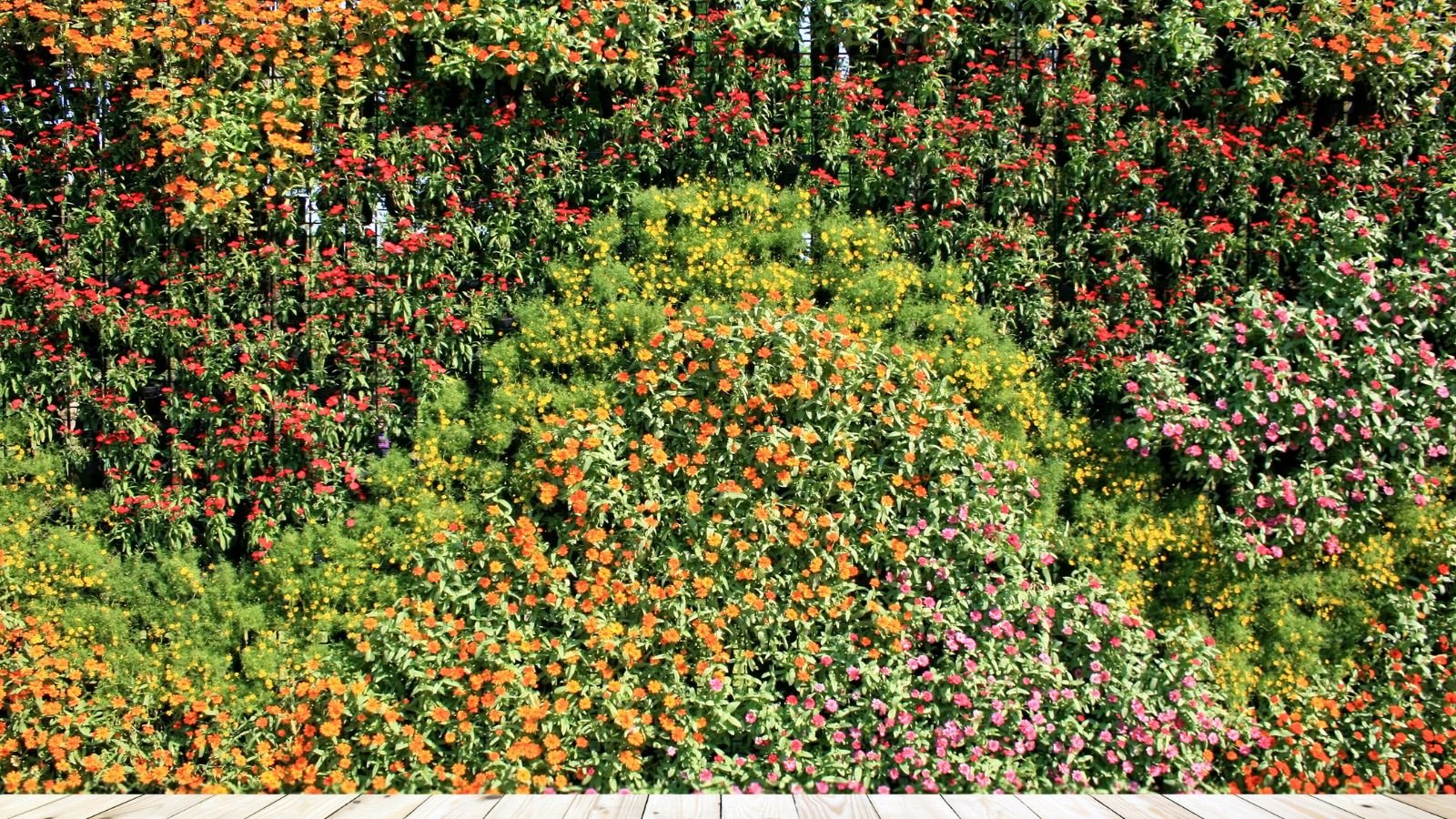 Get creative with your living plant walls.
Get creative with your living plant walls. Ideas abound for creative plant walls that tailor to our individual styles. For inspiration, modular systems or do-it-yourself setups generate options. They adapt to our existing spaces, whether creating new panels or working with existing structures.
Felt Pockets
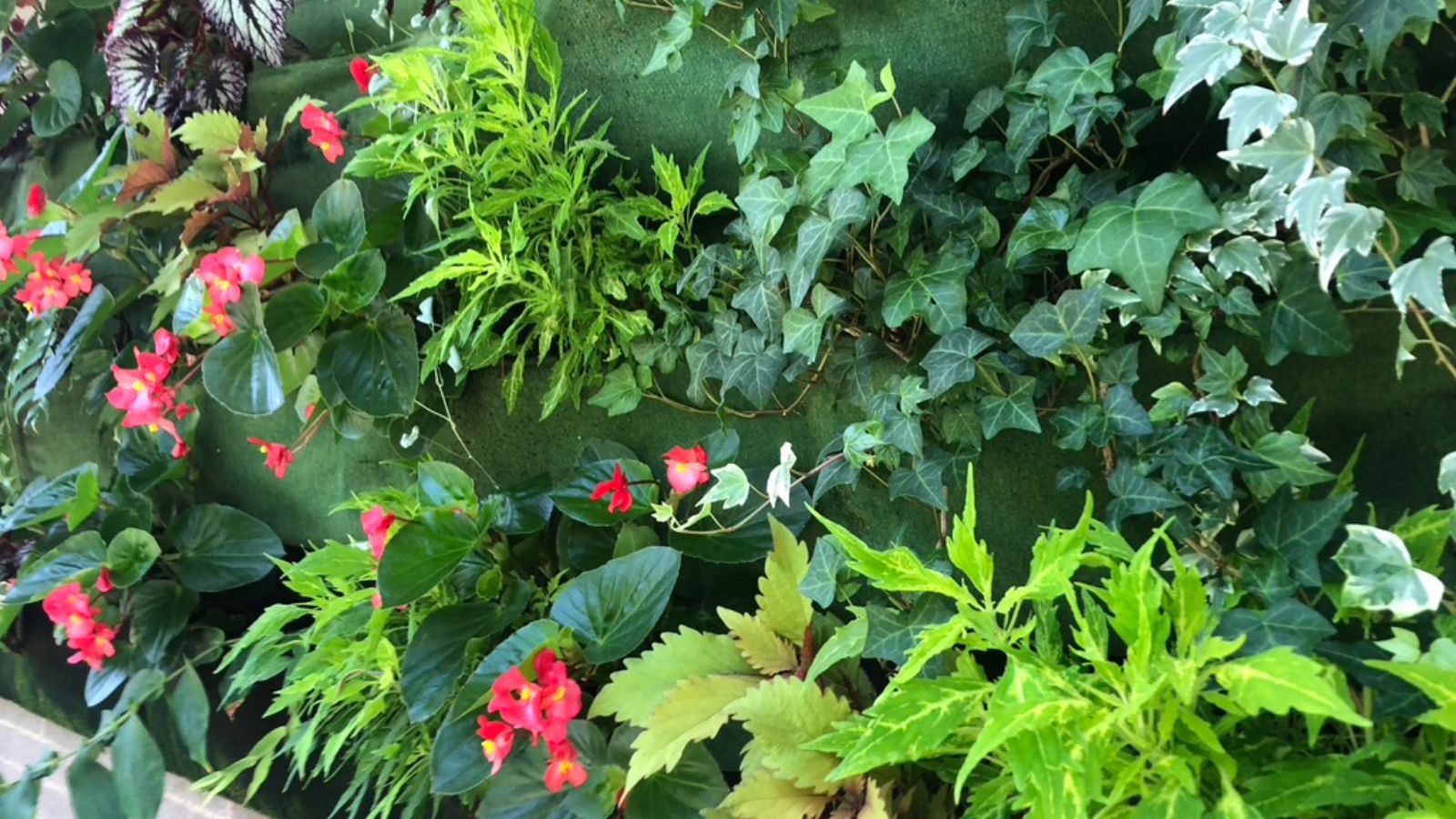 Felt pockets blend well with plants.
Felt pockets blend well with plants. Thick, felt pockets create a living strip in versatile sizes. Ready to fill with potting soil and plants, the easy plant wall systems are a streamlined option for growing vertically. Depending on the plant selection, two or three usually fill a pocket. Upright and trailing specimens create a full look almost instantly.
The sturdy fabric often comes in single strips with metal grommets for anchoring to a wall. In green, brown, or black, they blend until leafy stems cover the base material. Arrange multiple rows for a full, layered look. Install drip irrigation in the liner or soak the pockets with hand watering.
For a functional, offbeat, easy, and affordable alternative, shoe storage hangers make vertical planting pockets. Create drainage holes in the pockets and choose small plants like herbs for a usable harvest.
Modular
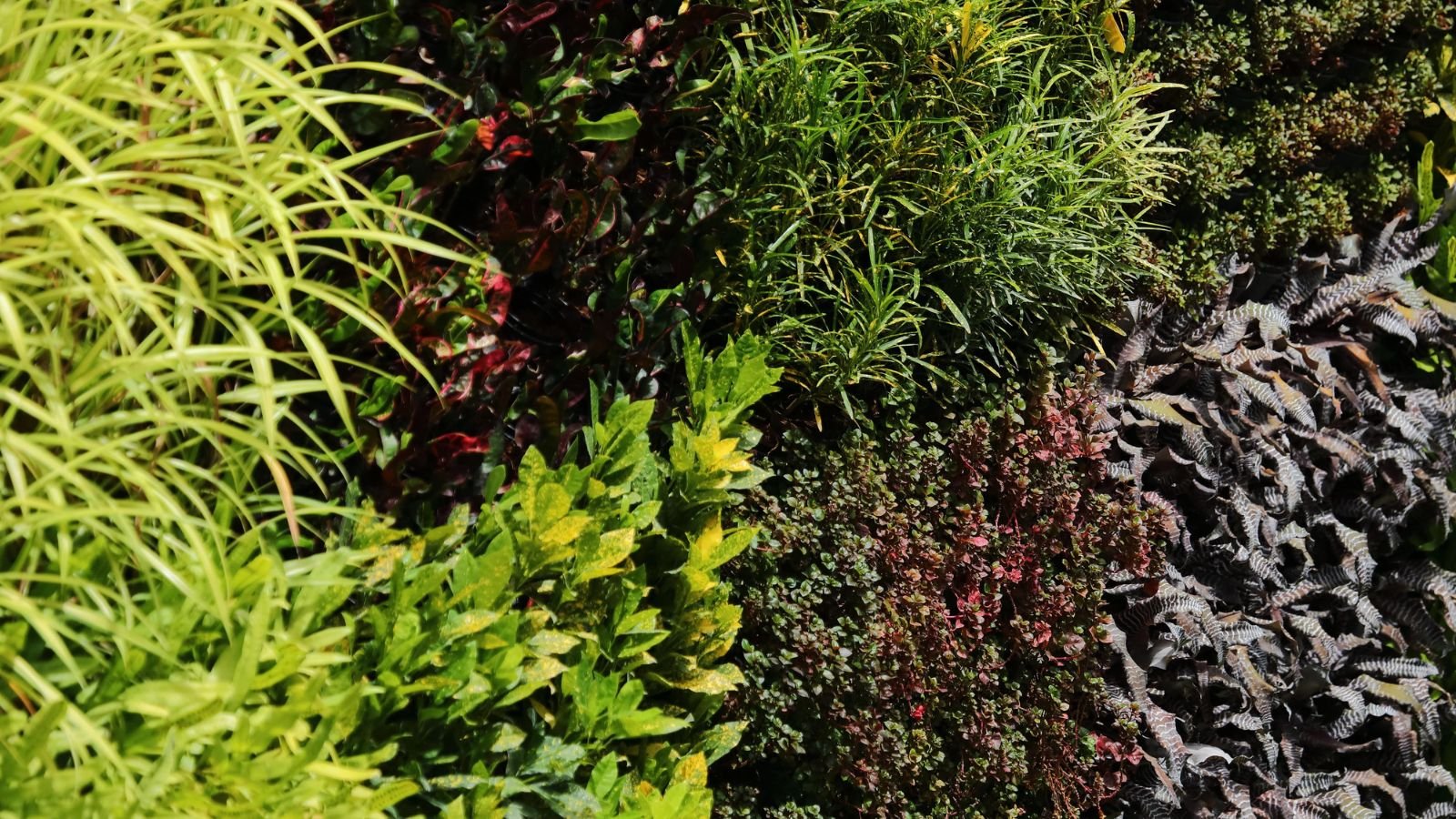 Purchase a plant wall kit that suits your space.
Purchase a plant wall kit that suits your space. Pre-fab and professional install options ensure the most success for self-contained systems. Living walls are nuanced, requiring trial and error in experimentation for achieving healthy plants.
If you’re growing indoors or want a ready-made plant wall configuration, modular systems are a reliable investment. While more costly, they take some of the guesswork out of how to build a self-sustaining living wall (especially with water containment). Professional services offer installation and monthly maintenance services if you don’t want to worry about upkeep.
Pallet Upcycle
 A pallet garden is a beginner-friendly DIY.
A pallet garden is a beginner-friendly DIY.For a DIY option, a basic pallet becomes the framework for a plant wall. The pallet mounts to a wall or fence. Use a liner, wood, or planters to enclose areas for potting soil, or insert individual pots within the slats.
If growing herbs or other edibles in pallets, make sure to start with a new, untreated one or install a liner. This keeps the plants and soil free of unknown chemicals.
Espalier
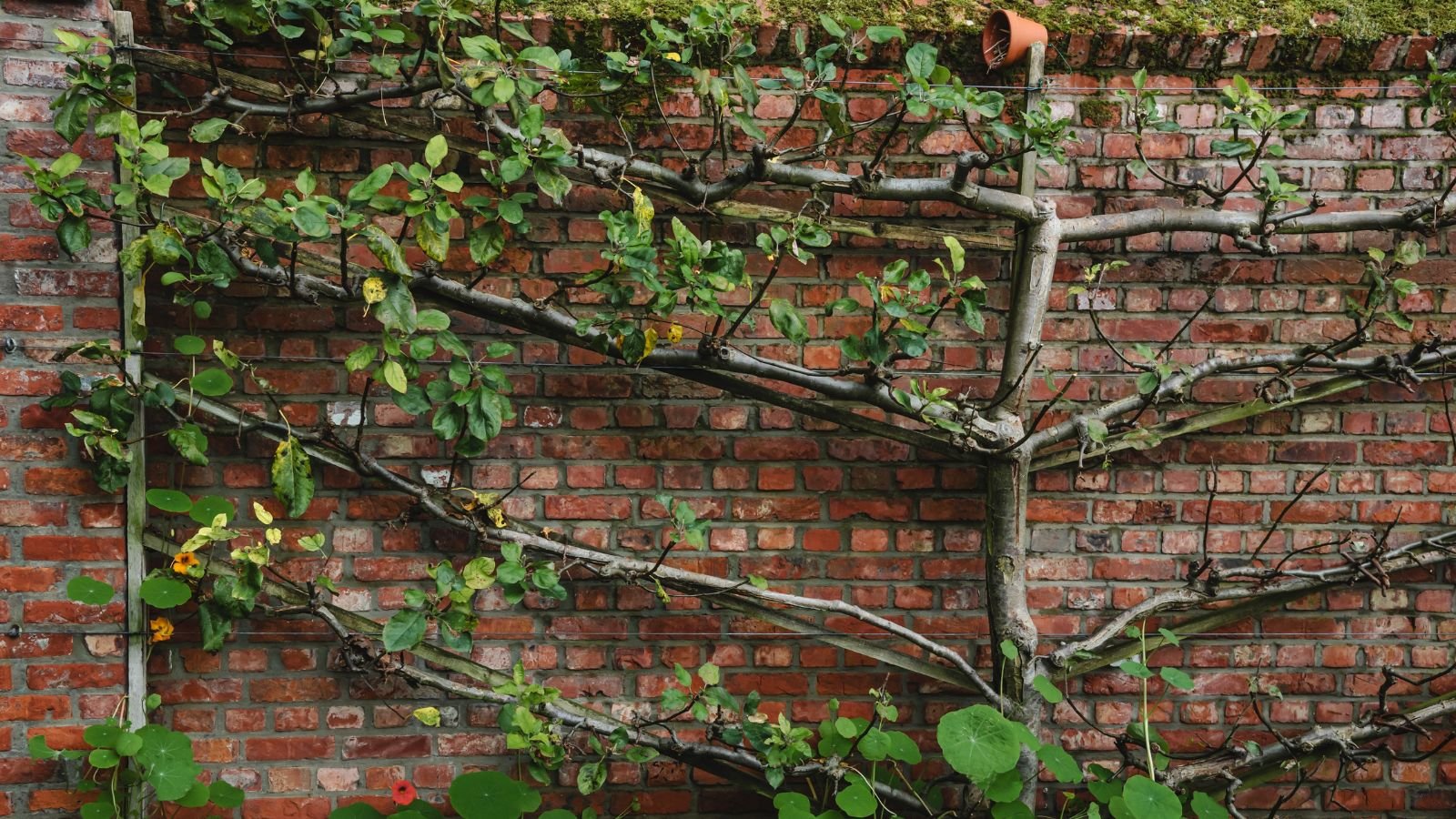 Use trees to create your plant wall with this technique.
Use trees to create your plant wall with this technique. Espaliered plants create their own striking architecture in the garden. They take up little space with branching arranged in a two-dimensional pattern. Ideal for narrow spaces or to create a focal point, espalier is a historic technique for growing within walled gardens.
Espalier is eye-catching against a bare wall and serves to screen any unsightly features. Use heavy-gauge galvanized wire or wood supports anchored to the wall, fence, or underpinning to train and support the branches. Even a chain link fence works.
Trees and shrubs with long branches, blooms, fruits, and interesting bark make the best espaliers. Specimens include:
- Fruit trees (apples, pears)
- Camellia
- Climbing roses
- Flowering quince
- Holly
- Juniper
- Witchhazel
Espaliers typically fall into six basic patterns that include lateral lines, upright branching, and criss-crossing. This version of a plant wall requires regular tending and maintenance as the forms grow.
Suspended Pots
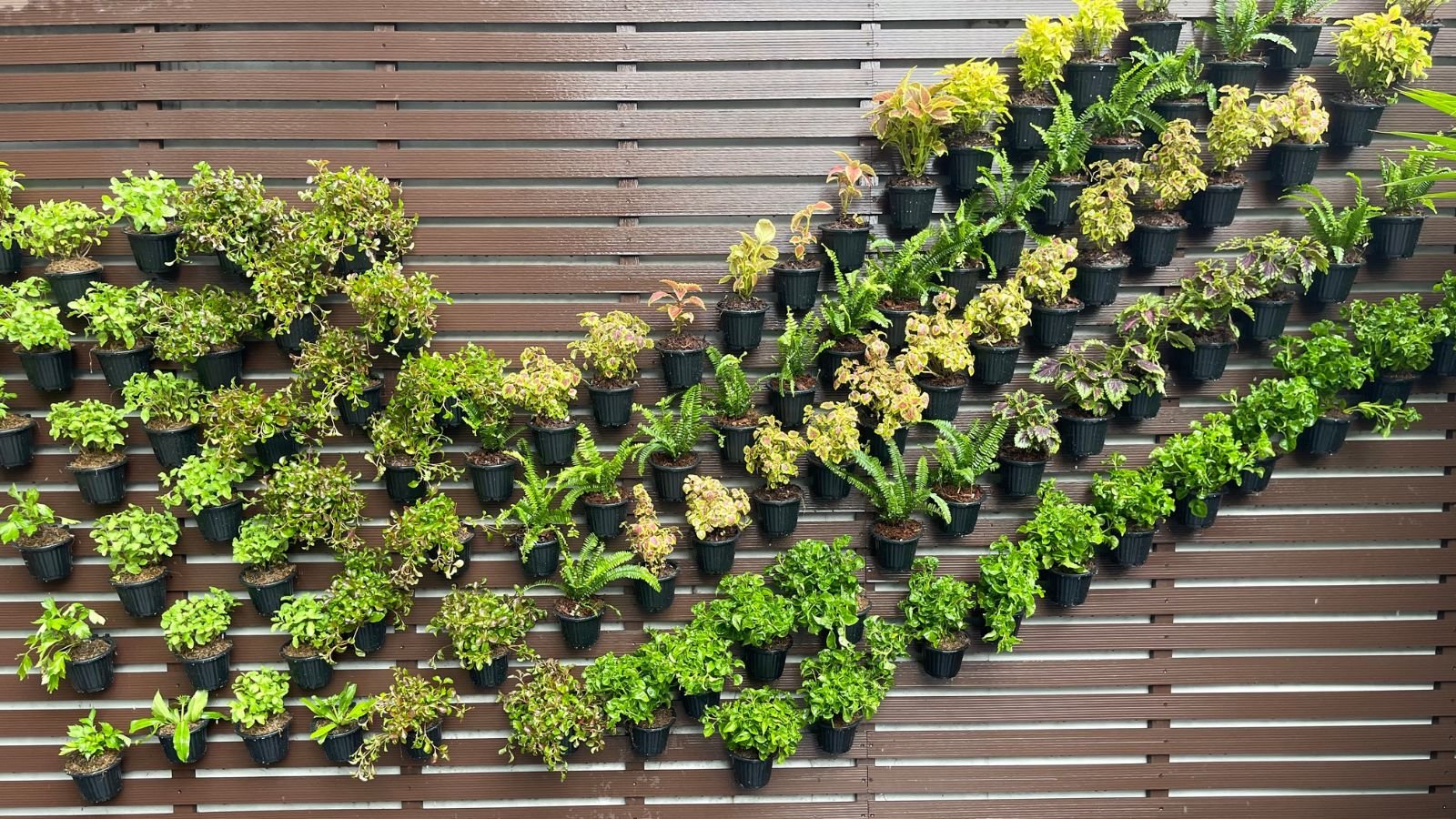 Simply hang pots and fill them with your favorite plants.
Simply hang pots and fill them with your favorite plants. Using simple pots in a formation makes for a striking and attainable vertical plant wall. Use plant hangers, zip ties, or other fasteners to support the containers against a fence or galvanized wire panel.
The drawbacks of individual pots are the need for frequent watering and the process of changing out and tending plants as they outgrow the vessel. But the look is easy to accomplish in a variety of spaces and support structures.
Simple Planters
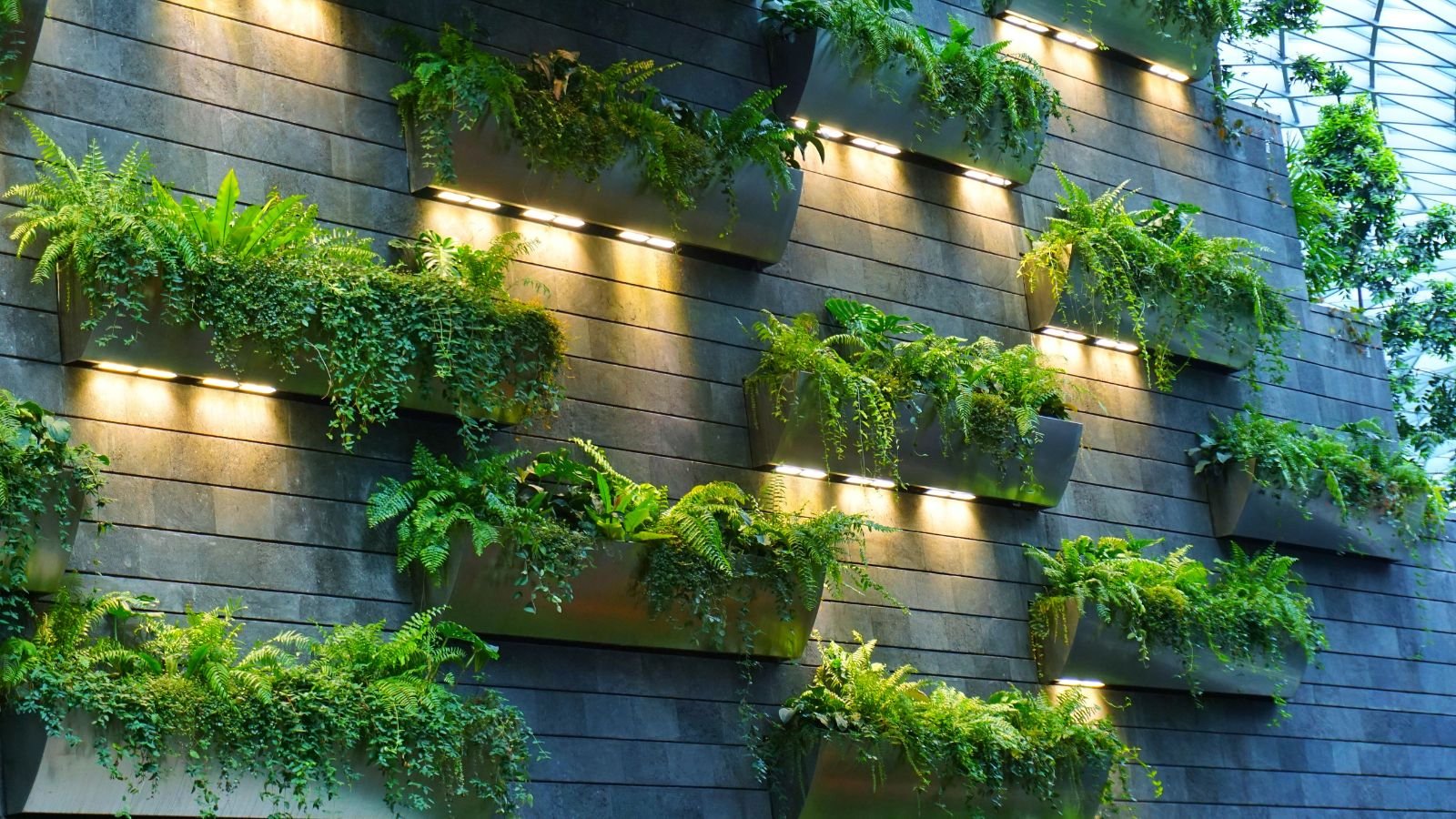 Wall-mounted planters add drama to a space.
Wall-mounted planters add drama to a space. Taking the suspended pots idea further are wall-mounted planters. Larger planters provide more soil volume for increased moisture retention and root space. While not a solid leafy panel, they provide visual interest in a structured vertical form.
From wood to metal to plastic, containers that suit your style and growing purpose work almost anywhere. Rain gutters to galvanized buckets with drainage holes become workable planters.
Placement
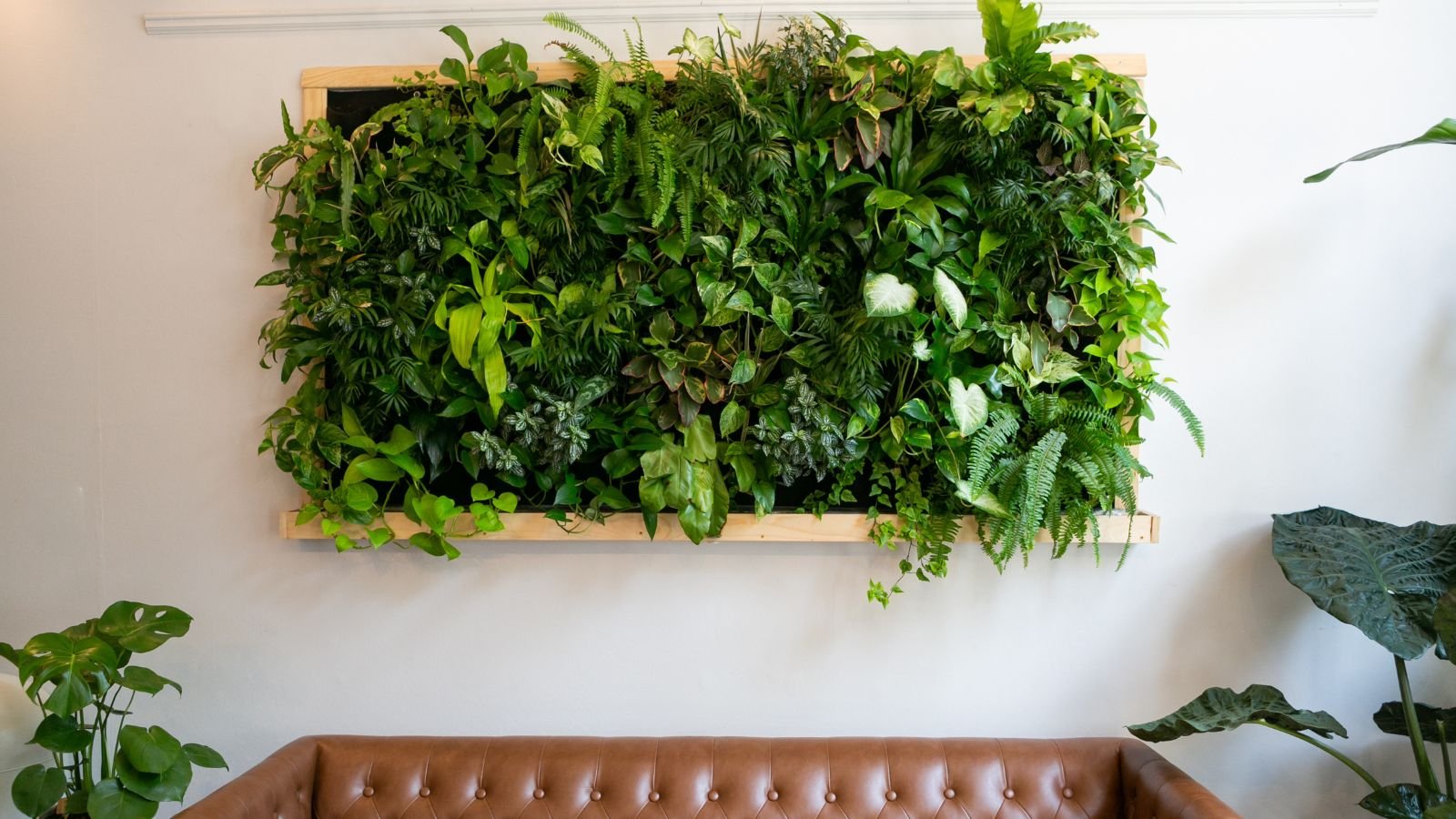 Plant walls are quite challenging to maintain in the wrong spot.
Plant walls are quite challenging to maintain in the wrong spot. The biggest challenges of plant walls are irrigation runoff, air circulation, and light conditions. The first consideration in placement should be ready access to water. Living walls dry out more quickly than in-ground plantings and need water more frequently.
When determining your setup, decide how you’ll irrigate. Hose watering works well if you’ve got an easy outdoor configuration where drainage and overspray aren’t an issue. Targeted irrigation, like drip, offers more precise delivery to roots, with the capacity to be on a timer for ease of maintenance.
Because living walls tend to be densely planted, increasing air circulation with a bit of space between the structure, wall, and plants is a good defense against fungal problems and moisture buildup.
You’ll often see plants positioned at an angle for full, upward, and outward growth. Trim overcrowded leaves and stems regularly to keep the look fresh, increase airflow, and reduce the spread of diseases.
Size and Weight
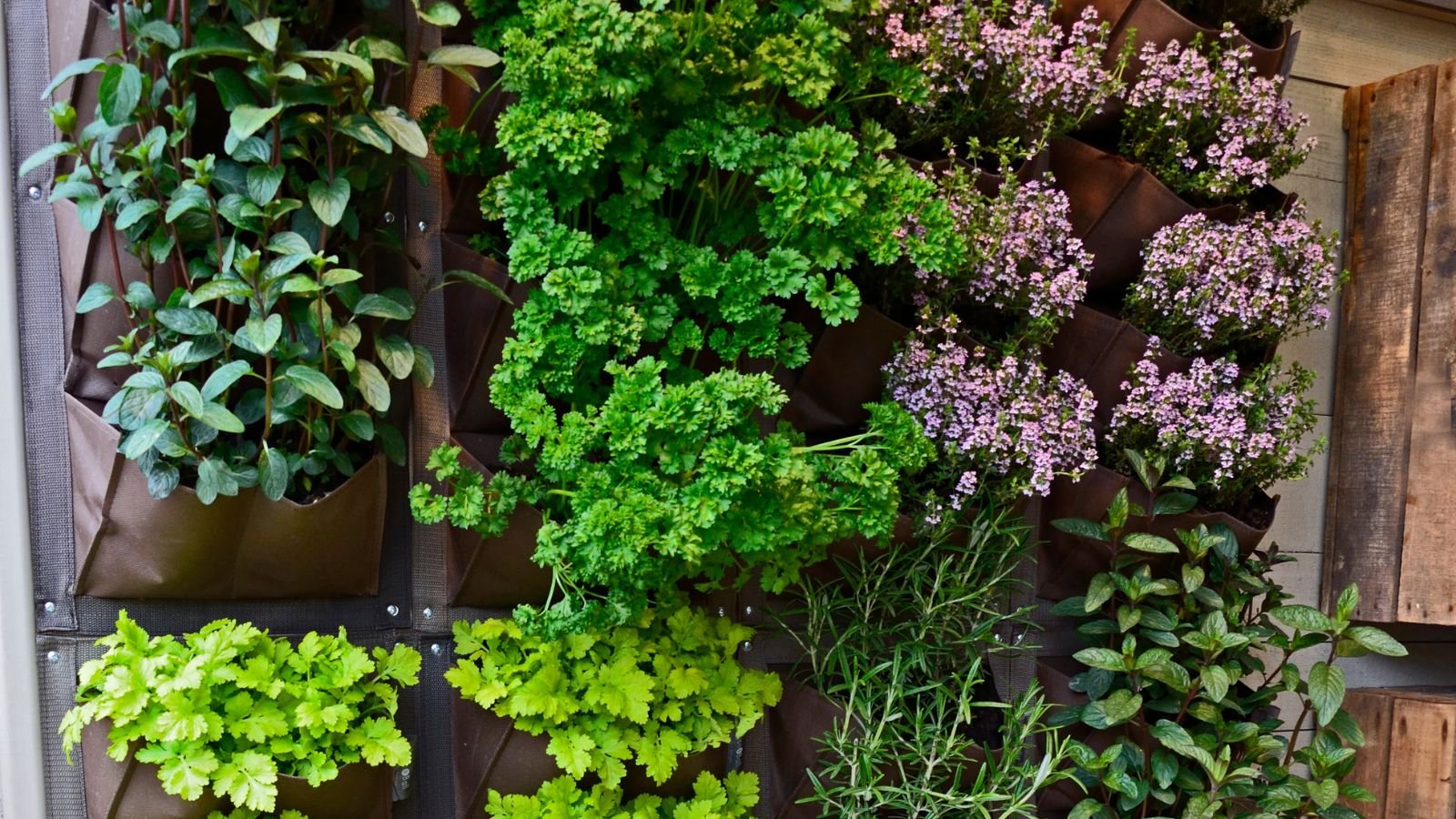 Wet soil quickly becomes heavy.
Wet soil quickly becomes heavy. The next big consideration relates to how much you plan to grow and the weight of the materials, including the structure, potting media volume when wet, and plants. Less weighty options include anchored wire trellis panels and espaliers.
Heavier configurations involve anchored planter boxes and panels. If anchoring to an existing wall, ensure it can bear the load of the plant wall.
Material
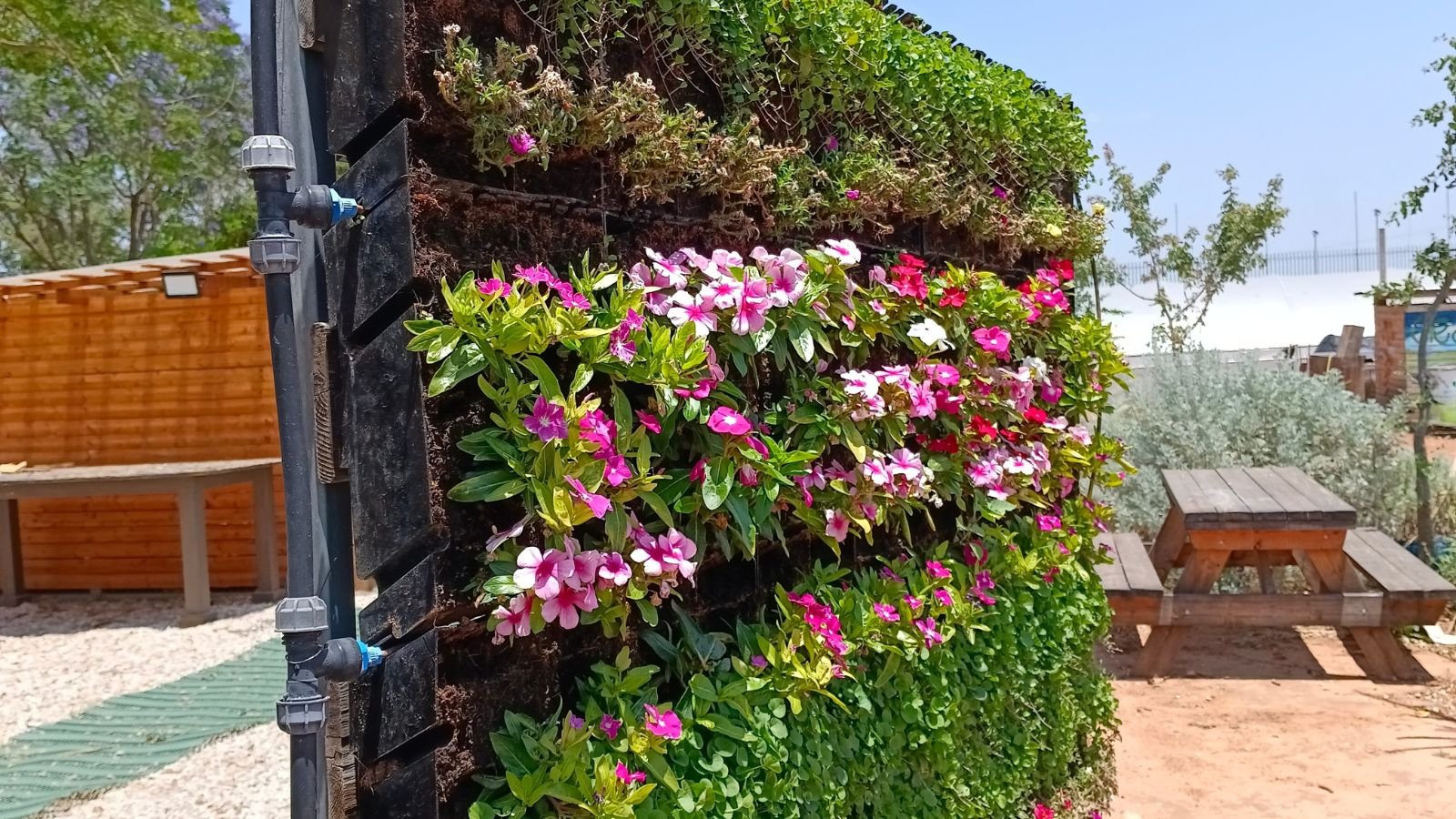 No matter the material, make sure there is good drainage.
No matter the material, make sure there is good drainage. The material of the plant wall informs drainage, weight, aesthetics, and the bottom line. Budget-friendly options are usually DIY, while pre-fab and modular setups allow ease of installation and maintenance.
All need good drainage to allow water to run freely, whether draining out of the bottom, redirecting, or recirculating. Pots, felt pockets, and planter boxes drain freely.
A catchment system is necessary for indoor configurations to minimize drips. Targeted irrigation delivers small amounts of volume directly to the base of the plant.
Sun Exposure
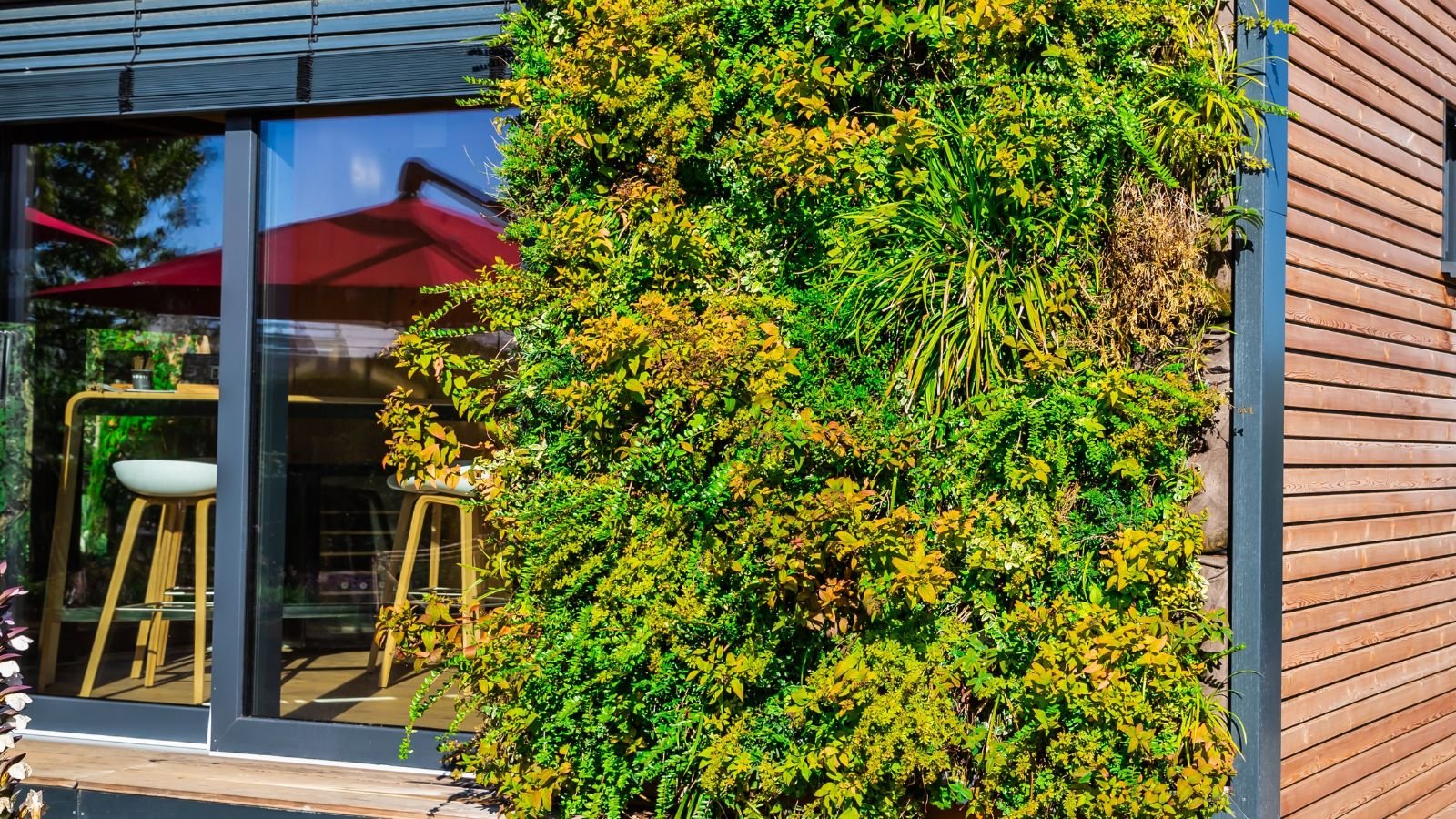 Choose the right plants for the sun level in that location.
Choose the right plants for the sun level in that location. Walls are also subject to varying temperature and light conditions based on their location. Green wall plantings may face exposure to hot and reflective surfaces, deep shade, or both as sunlight moves across the space.
Consider lighting when placing the wall, aiming for bright, indirect light for indoor plantings or sunnier conditions with afternoon shade protection for outdoor ones. Grow lights are a supplemental option indoors.
Observe the site at different times of day to account for direct sun and shaded zones. South- or west-facing walls provide the best exposure for fruiting and flowering plants, but they need to handle intense afternoon sun. East-facing gains that ideal morning sun, while north-facing situations receive less sun and cooling shade.
Growing Medium
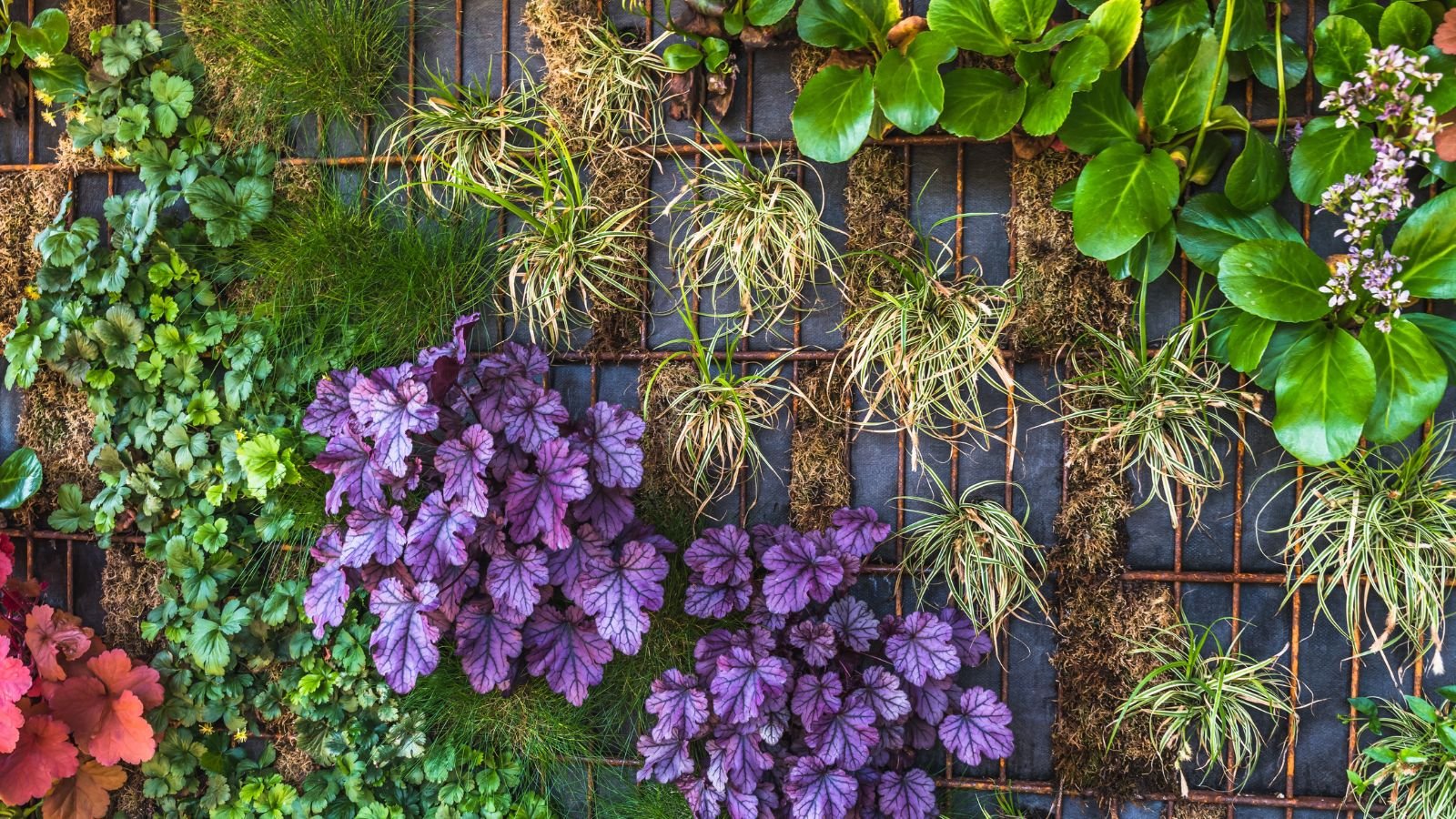 You’re not limited to potting soil.
You’re not limited to potting soil. Potting media varies for plant walls. The growing medium provides essential nutrients for plants and significantly affects their overall health. Quality well-draining potting mixes work well and support most plants.
Tailor them to specific plantings, like succulent mixes, depending on the selections. Soil quality is as important as access to sunlight and water.
Soilless options are useful for controlled situations. Sphagnum moss and peat (or peat alternatives) provide more containment and less mess. These need regular moisture to avoid drying out, as rehydrating is a challenge.
Plant Selection
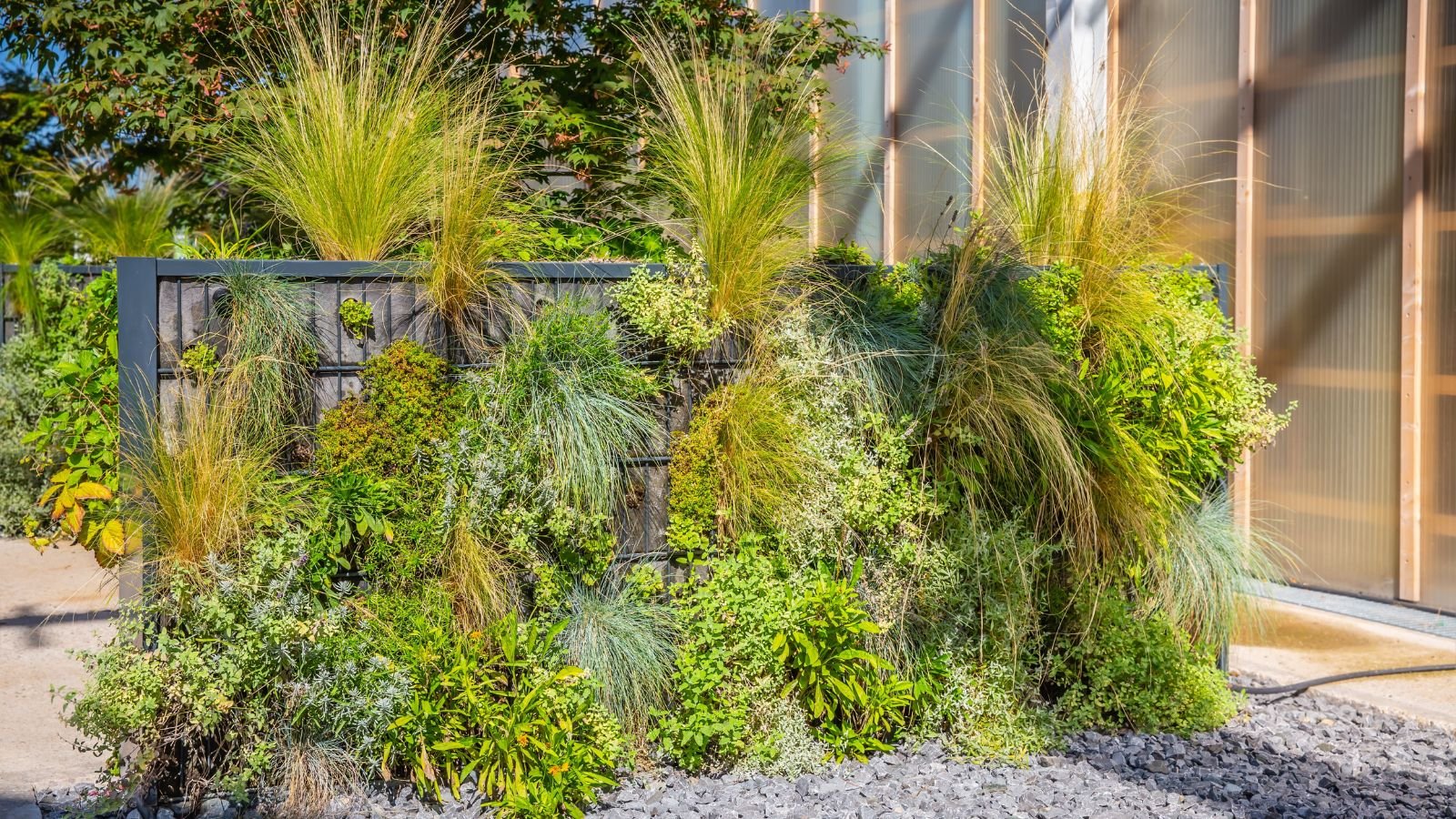 Choose the right plants for your climate.
Choose the right plants for your climate. Plant selection and layout are the most exciting parts of creating a plant wall. Based on your location, light exposure, and moisture requirements, arranging the composition brings the showstopping results we want in a lush green wall.
Tropicals suit indoor and shaded locations. Succulents tolerate drier situations with bright light. Flowering annuals bring color while perennials offer multi-season appeal. Herbs and veggies make for a fun kitchen garden, ready to grow vertically for easy harvesting.
Opt for dwarf, compact plants to thrive in vertical culture with a small growing area. Repeat selections for the most impact, whether in a grouping or dotted along the arrangement. Varying forms, especially trailing, add interest.
Mix up textures from fine blades to broad leaves, and colors from deep green to plum to chartreuse. Dynamic foliage is just as valuable as blooms when it comes to living walls.
Watering
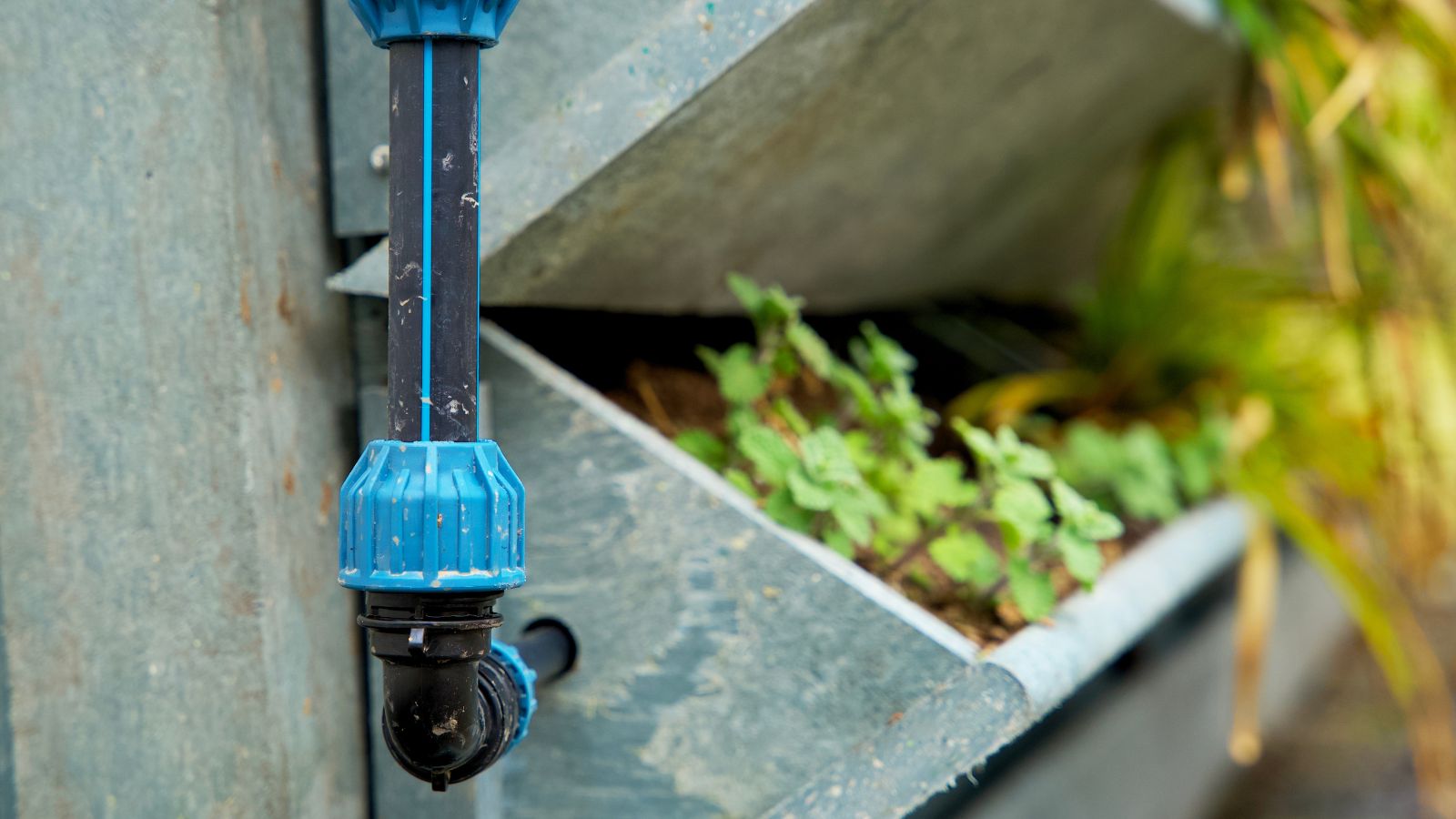 Set up irrigation systems to save time.
Set up irrigation systems to save time. Like sunlight and soil, water is essential to the success of growing vertically. Easy access to water is essential for plant walls.
If your space has a hose connection, install a timer and drip system between each plant or segment. You can easily adjust how often and for how long water runs for low volume with little runoff.
Supplemental hand watering becomes useful for those not on the system or that need additional spot watering during dry spells.
How often to water depends on:
- Specific plant needs
- Sun exposure
- Planter size and type
- Potting media
Warmer days require more regular water. Adjust and reduce water sessions as temperatures cool. To check soil moisture, do a touch test.
If the soil is dry to a couple of inches below the surface, it’s time to water. If not, hold off a bit. Watering needs for plant walls take experimenting and adjusting, which come quickly with experience.
Fertilizing
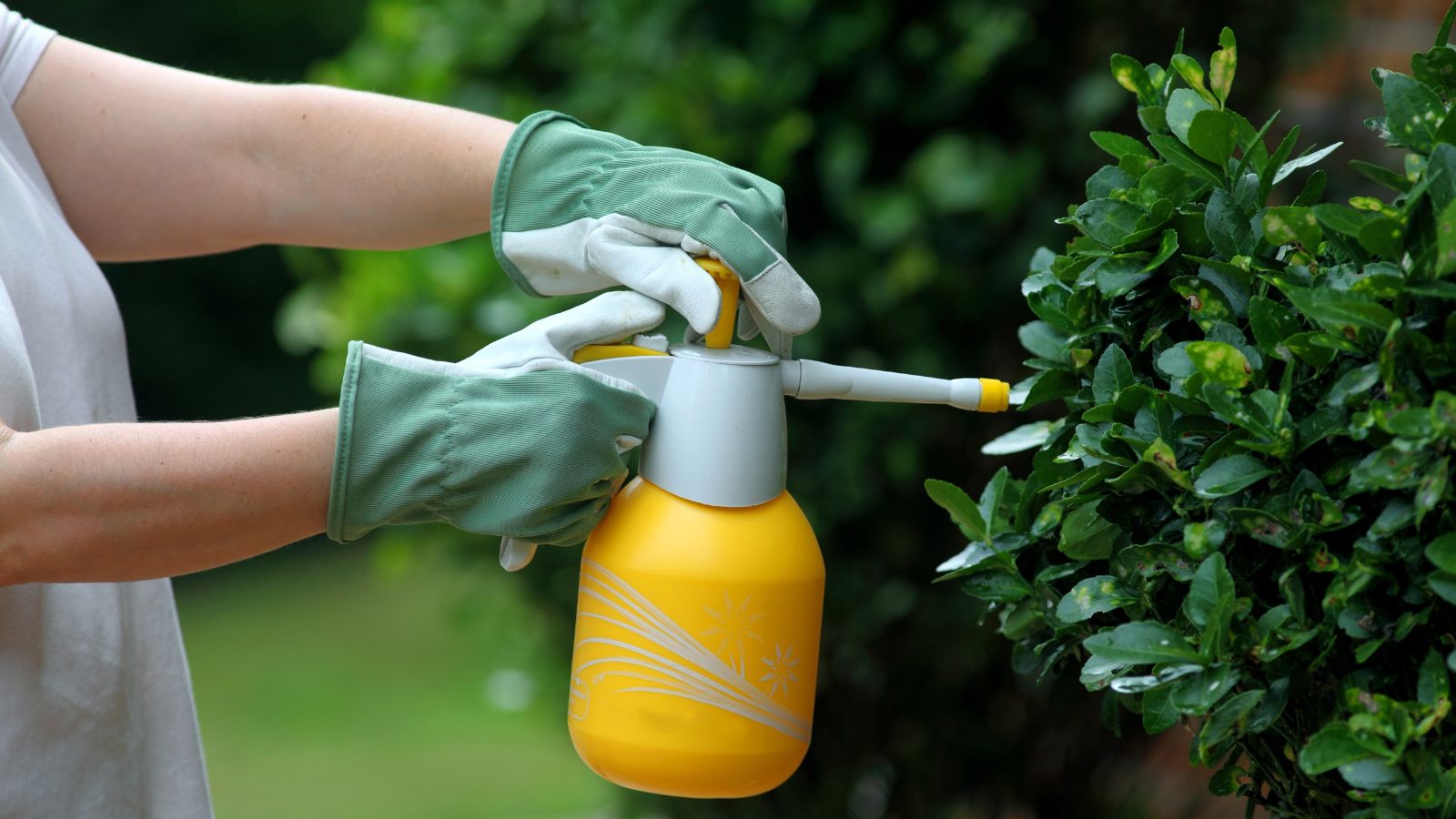 Plant walls need fertilizer more often.
Plant walls need fertilizer more often. Living wall plants need feeding more frequently than in-ground plantings, as nutrients leach faster with regular watering and draining. Those in soilless media rely on external nutrition like liquid feeds.
Plan to fertilize every two to three weeks or so during the active growing season. Reapply liquid feed after heavy rains, which dilute the nutrients as the soil drains.
Maintenance
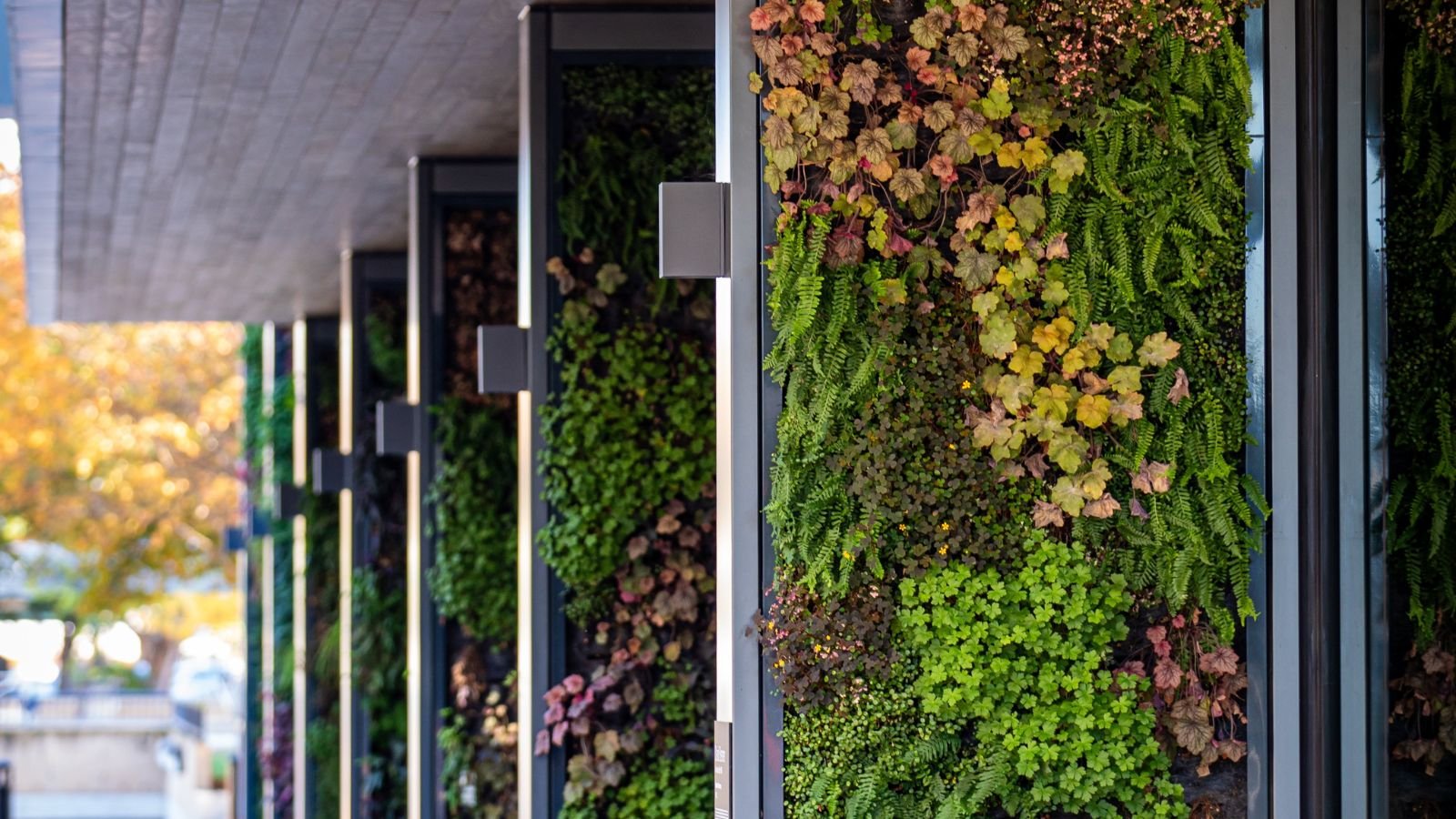 Check plants regularly to identify problems.
Check plants regularly to identify problems. Even low-maintenance plant walls benefit from regular checking, especially when it comes to soil moisture. Additionally, light trimming and pruning foster new growth while tidying the look. If you’re growing herbs, harvest regularly to keep new growth flushing.
Cut back leggy stems in the summer and at season’s end, whether indoors or out, for the best health. Scout for pests and diseases, including common pests like aphids, scale, and spider mites that crop up in house and garden plants. They flock to drought-stressed plants or those experiencing cultural fluctuations that cause weakness.
Refresh the plants as needed or with a makeover in the spring. As potting media breaks down, it needs replacing every two years or so, depending on the type and localized conditions.


 2 months ago
36
2 months ago
36



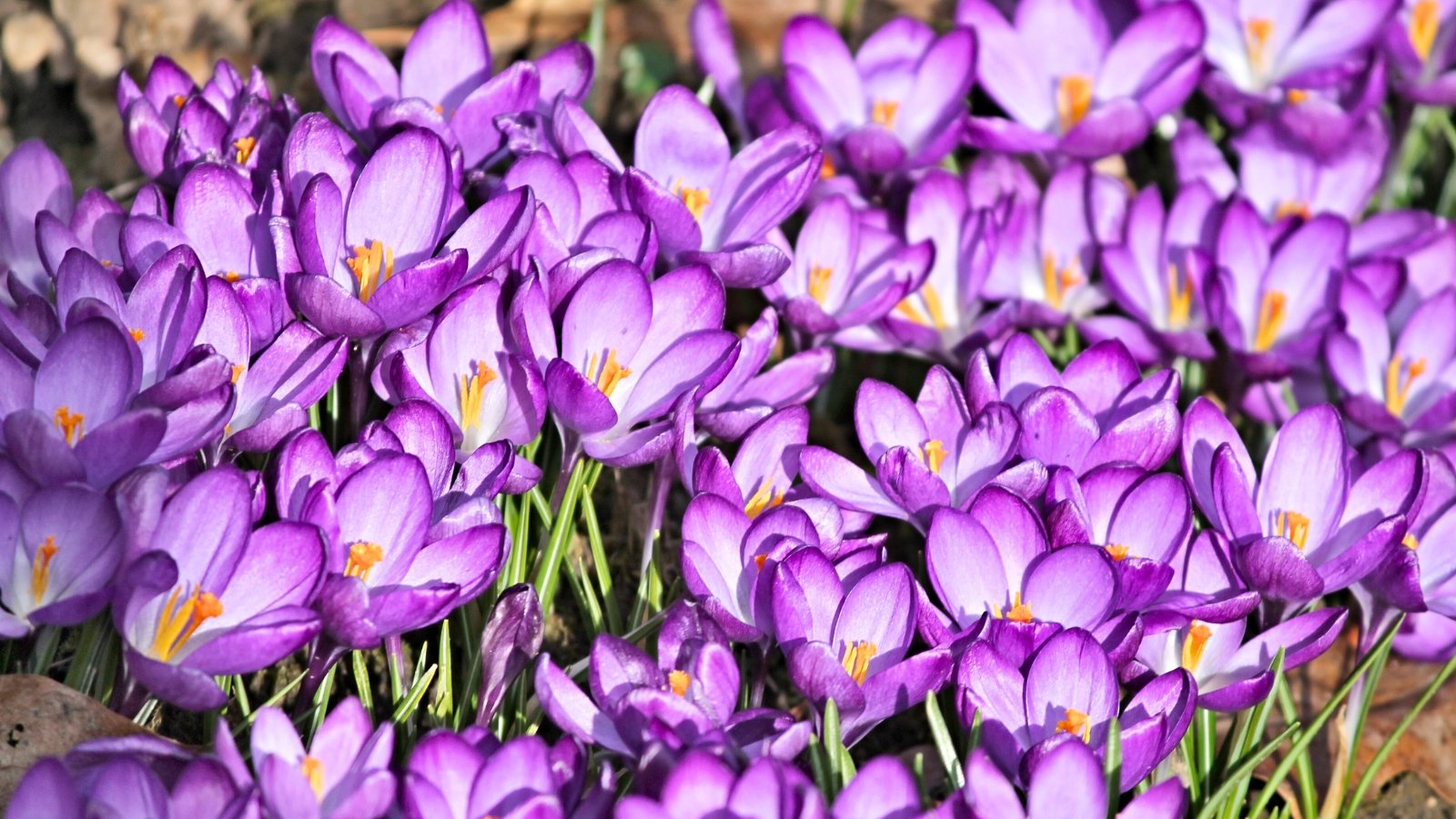
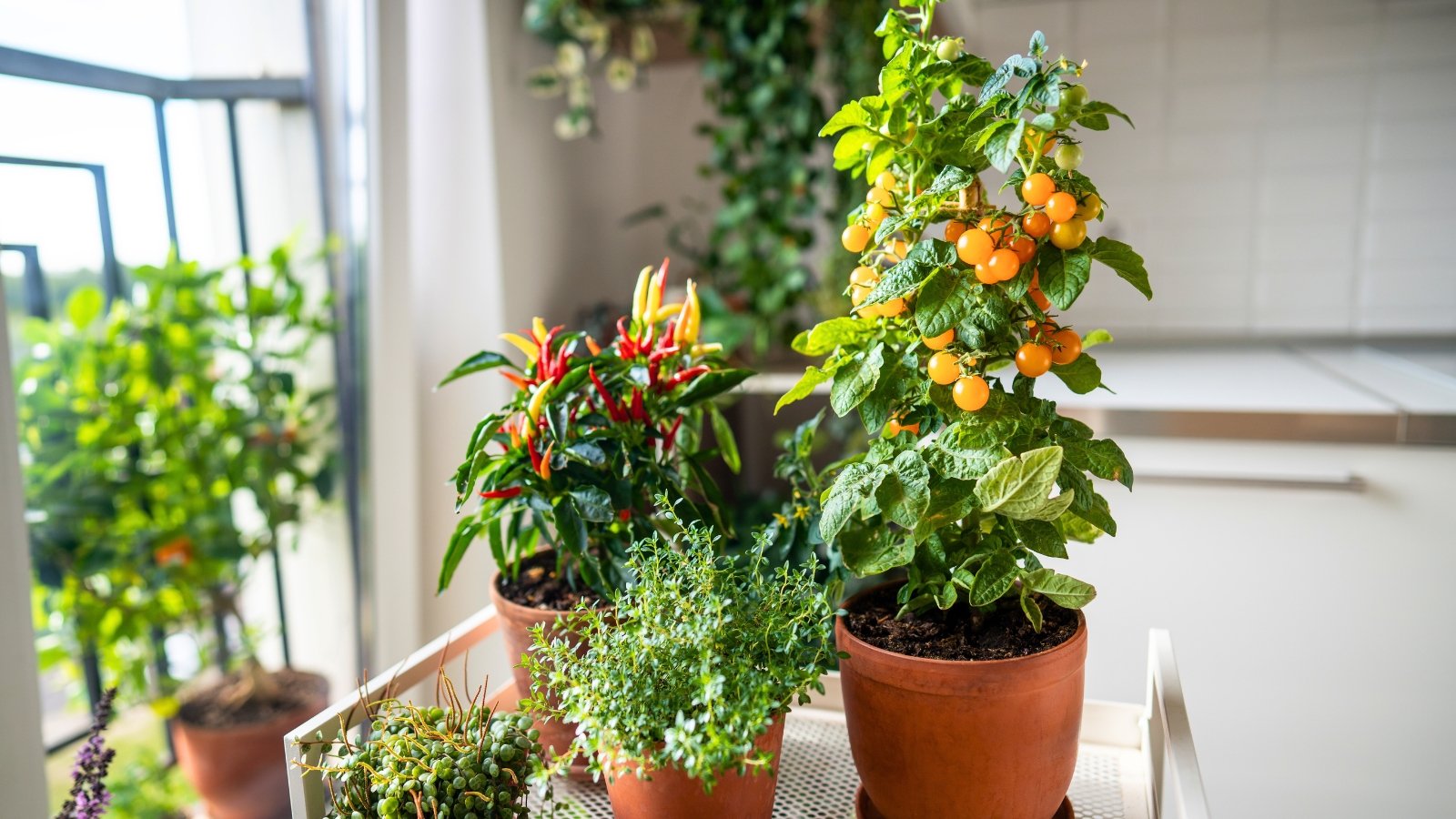
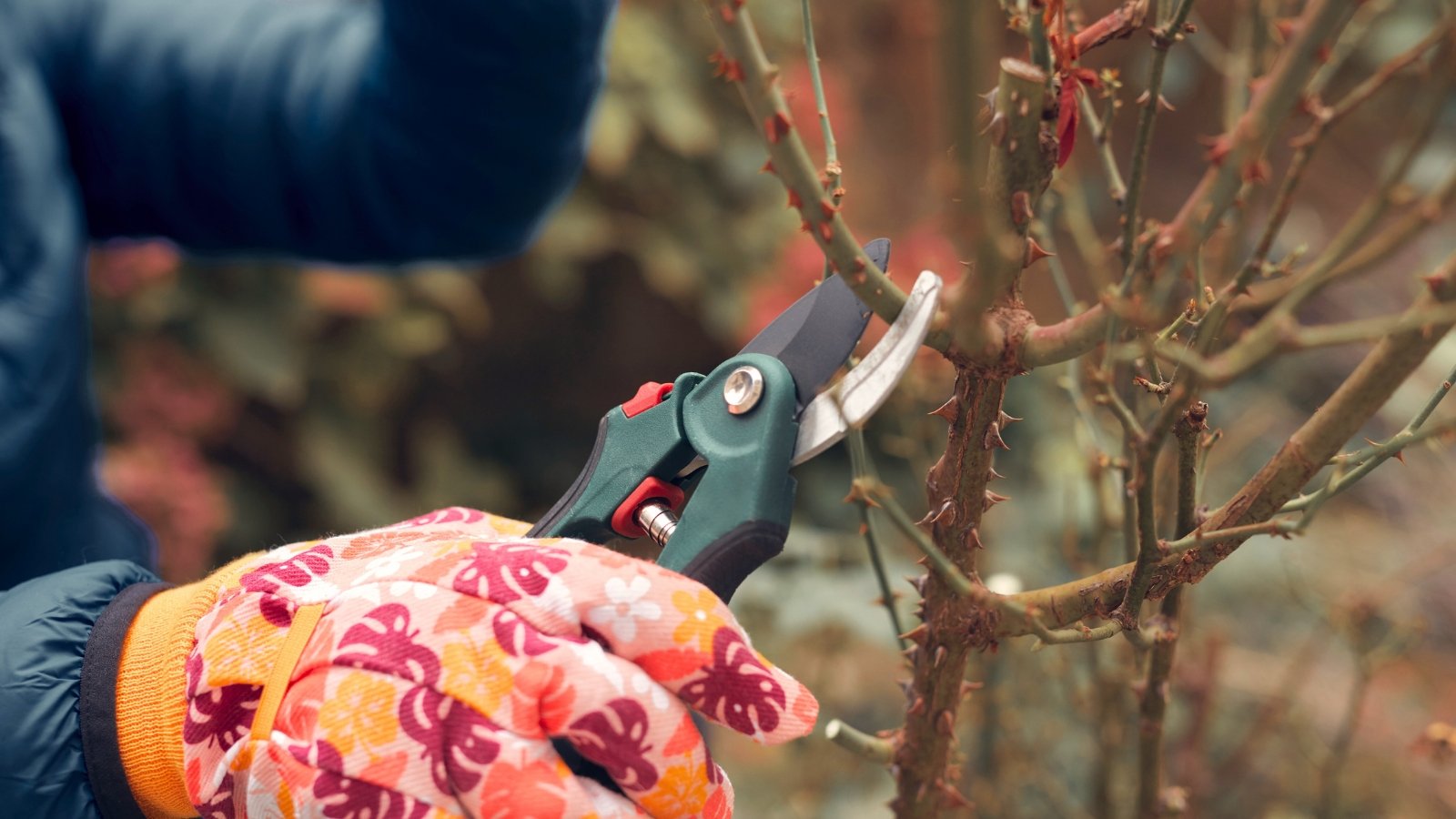
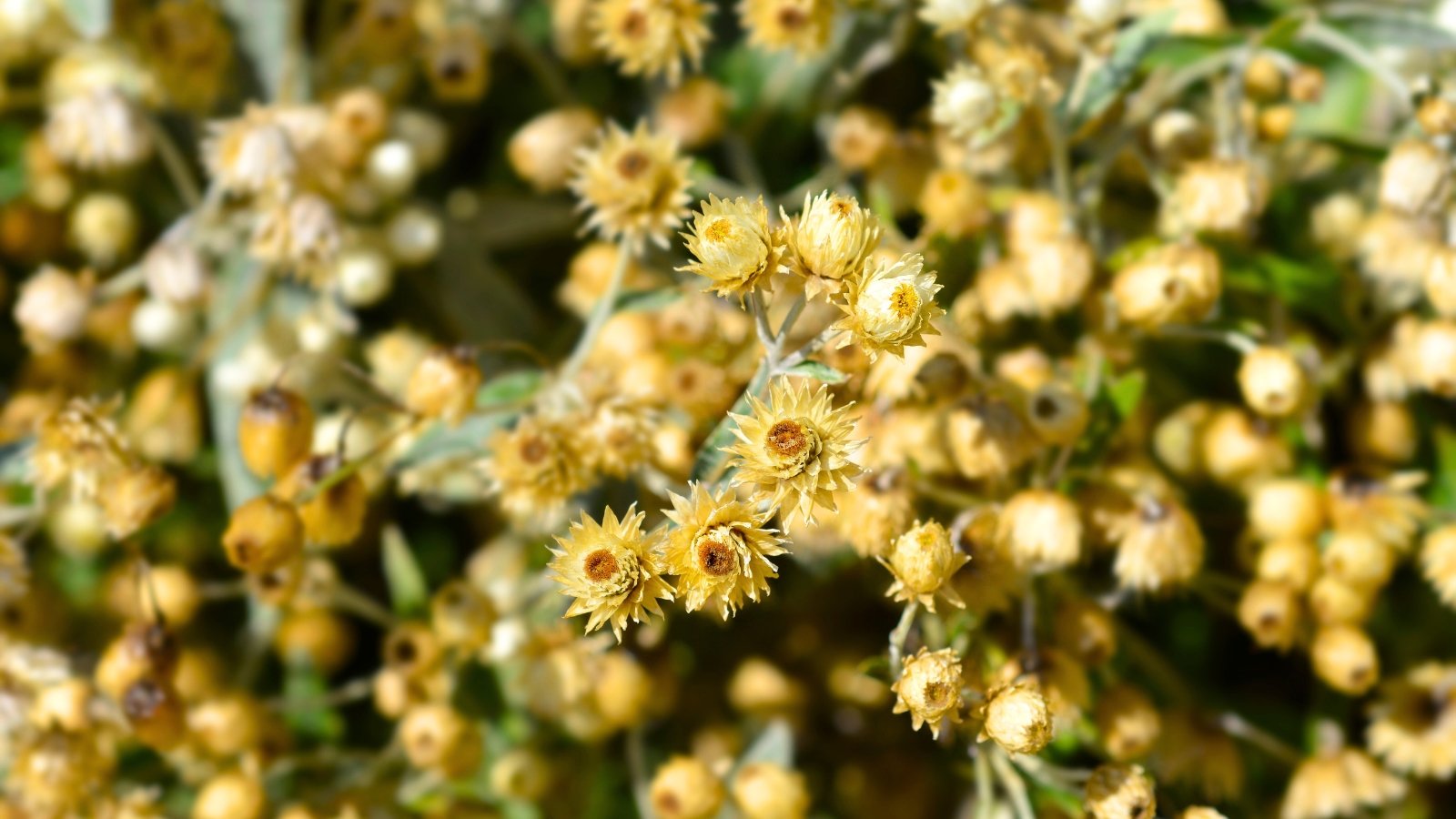














 English (US) ·
English (US) ·  French (CA) ·
French (CA) ·